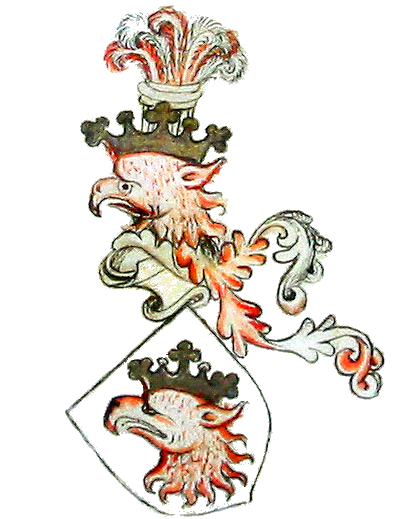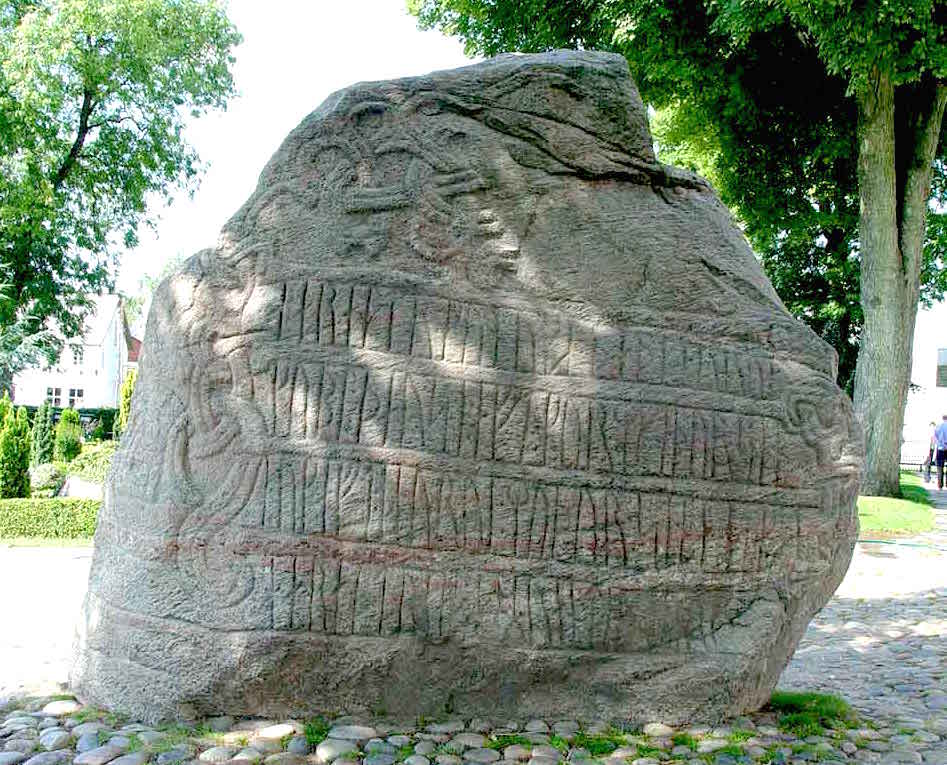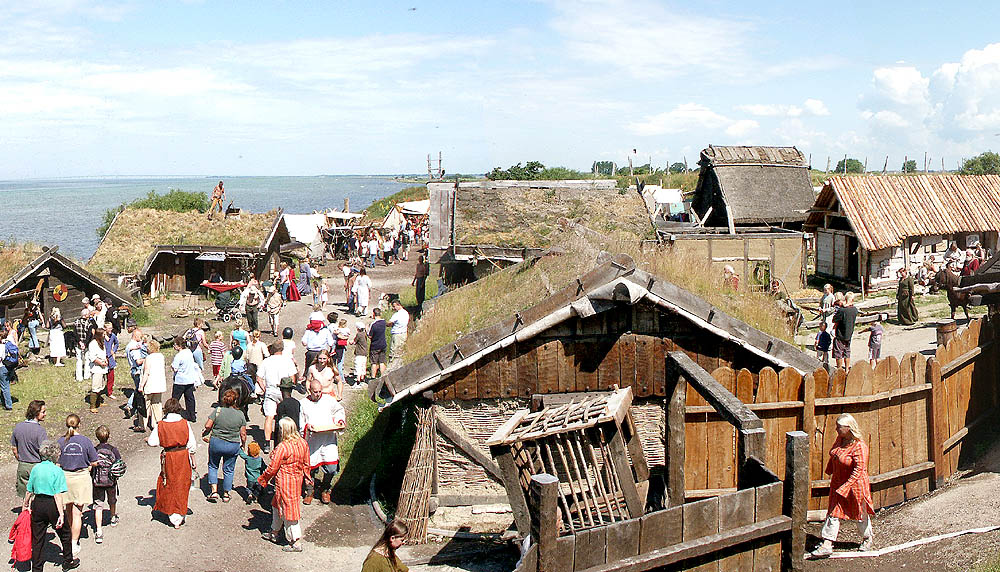|
Sven Rosborn
Sven Gunnar Rosborn (born 1949 in Malmö, Sweden) is a Swedish archaeologist, historian and writer best known for his contributions to the archaeology of the Viking Age in the province of Scania and for his leadership of archaeology and history research and education foundations. He has received media attention for his claims related to the Curmsun Disc, which he maintains is a memorial plaque of the great Viking king Harald Bluetooth. Sven Rosborn graduated from Lund University in 1972 and has a Bachelors of Science (BSc) degree in Ancient Archaeology (1971) and Medieval Archaeology (1972). He earned his PhD in Medieval Archaeology in 1974. After completing his graduation he worked as archaeologist and from 1977 as director of The City Museum at Malmö Castle. In August 1990, along with two colleagues, he founded the publishing house Historiska Media and started to publish a monthly history magazine Populär Historia. He is a co-founder of Foteviken Museum (1995) at which he ... [...More Info...] [...Related Items...] OR: [Wikipedia] [Google] [Baidu] |
Malmö
Malmö is the List of urban areas in Sweden by population, third-largest city in Sweden, after Stockholm and Gothenburg, and the List of urban areas in the Nordic countries, sixth-largest city in Nordic countries, the Nordic region. Located on the Øresund, Öresund Øresund, strait on the southwestern coast of Sweden, it is the largest city in Scania, with a municipal population of 365,644 in 2024, and is the Governors of Skåne County, gubernatorial seat of Skåne County. Malmö received its city privileges in 1353, and today Metropolitan Malmö, Malmö's metropolitan region is home to over 700,000 people. Malmö is the site of Sweden's only Fixed link, fixed direct link to continental Europe, the Öresund Bridge, completed in 2000. The bridge connects Sweden to Denmark, and carries both road and rail traffic. The Öresund Region, which includes Malmö and Copenhagen, is home to four million people. The city was one of the earliest and most-Industrial Revolution, industri ... [...More Info...] [...Related Items...] OR: [Wikipedia] [Google] [Baidu] |
Sweden
Sweden, formally the Kingdom of Sweden, is a Nordic countries, Nordic country located on the Scandinavian Peninsula in Northern Europe. It borders Norway to the west and north, and Finland to the east. At , Sweden is the largest Nordic country by both area and population, and is the List of European countries by area, fifth-largest country in Europe. Its capital and largest city is Stockholm. Sweden has a population of 10.6 million, and a low population density of ; 88% of Swedes reside in urban areas. They are mostly in the central and southern half of the country. Sweden's urban areas together cover 1.5% of its land area. Sweden has a diverse Climate of Sweden, climate owing to the length of the country, which ranges from 55th parallel north, 55°N to 69th parallel north, 69°N. Sweden has been inhabited since Prehistoric Sweden, prehistoric times around 12,000 BC. The inhabitants emerged as the Geats () and Swedes (tribe), Swedes (), who formed part of the sea-faring peopl ... [...More Info...] [...Related Items...] OR: [Wikipedia] [Google] [Baidu] |
Viking Age
The Viking Age (about ) was the period during the Middle Ages when Norsemen known as Vikings undertook large-scale raiding, colonising, conquest, and trading throughout Europe and reached North America. The Viking Age applies not only to their homeland of Scandinavia but also to any place significantly settled by North Germanic peoples, Scandinavians during the period. Although few of the Scandinavians of the Viking Age were Vikings in the sense of being engaged in piracy, they are often referred to as ''Vikings'' as well as ''Norsemen''. Voyaging by sea from their homelands in Denmark, Norway, and Sweden, the Norse people settled in the Viking activity in the British Isles, British Isles, History of Ireland (800–1169), Ireland, the Faroe Islands, Settlement of Iceland, Iceland, Norse settlements in Greenland, Greenland, History of Normandy, Normandy, and the Baltic Sea, Baltic coast and along the Trade route from the Varangians to the Greeks, Dnieper and Volga trade rout ... [...More Info...] [...Related Items...] OR: [Wikipedia] [Google] [Baidu] |
Scania
Scania ( ), also known by its native name of Skåne (), is the southernmost of the historical provinces of Sweden, provinces () of Sweden. Located in the south tip of the geographical region of Götaland, the province is roughly conterminous with Skåne County, created in 1997. Like the other historical provinces of Sweden, Scania still features in colloquial speech and in cultural references, and can therefore not be regarded as an archaic concept. Within Scania there are 33 municipalities of Sweden, municipalities that are autonomous within the Skåne Regional Council. Scania's largest urban areas of Sweden, city, Malmö, is the third-largest city in Sweden, as well as the fifth-largest in Scandinavia. To the north, Scania borders the historical provinces of Halland and Småland, to the northeast Blekinge, to the east and south the Baltic Sea, and to the west Öresund. Since 2000, a road and railway bridge, the Öresund Bridge, bridges the Öresund, Sound and connects Scania ... [...More Info...] [...Related Items...] OR: [Wikipedia] [Google] [Baidu] |
Curmsun Disc
The Curmsun Disc is a convex-concave gold disc that gained scholarly attention in 2014 after an 11-year-old Polish girl in Sweden showed it to her history teacher. Some scholars have tentatively dated the disc to the 10th to 12th century, although its authenticity is not universally accepted by historians or archaeologists. The disk weighs and has a diameter of . The Danish Viking king Harald Bluetooth is mentioned in the inscription of the disc. The disc's characteristics are influenced by Byzantine coins and seals. Origin The Curmsun disc was reportedly found as part of a Viking Age hoard discovered in 1841 in the cellar crypt of the ruined church in the village of Groß Weckow (now called Wiejkowo) in Province of Pomerania (1815–1945), Pomerania in Prussia (now part of Gmina Wolin, Poland). This location is just east of the bank of the river Dziwna and near the place where the semi-legendary Viking stronghold of Jomsborg stood between the 950s and 1043. According to Swedis ... [...More Info...] [...Related Items...] OR: [Wikipedia] [Google] [Baidu] |
Viking
Vikings were seafaring people originally from Scandinavia (present-day Denmark, Norway, and Sweden), who from the late 8th to the late 11th centuries raided, pirated, traded, and settled throughout parts of Europe.Roesdahl, pp. 9–22. They also voyaged as far as the Mediterranean Sea, Mediterranean, North Africa, the Middle East, Greenland, and Vinland (present-day Newfoundland in Canada, North America). In their countries of origin, and some of the countries they raided and settled in, this period is popularly known as the Viking Age, and the term "Viking" also commonly includes the inhabitants of the Scandinavian homelands as a whole. The Vikings had a profound impact on the Early Middle Ages, early medieval history of Northern Europe, northern and Eastern Europe, including the political and social development of England (and the English language) and parts of France, and established the embryo of Russia in Kievan Rus'. Expert sailors and navigators of their cha ... [...More Info...] [...Related Items...] OR: [Wikipedia] [Google] [Baidu] |
Harald Bluetooth
Harald "Bluetooth" Gormsson (; , died c. 985/86) was a king of Denmark and Norway. The son of King Gorm the Old and Thyra Dannebod, Harald ruled as king of Denmark from c. 958 – c. 986, introduced Christianization of Denmark, Christianity to Denmark and consolidated his rule over most of Jutland and Zealand. Harald's rule as king of Norway following the assassination of King Harald II of Norway, Harald Greycloak of Norway was more tenuous, most likely lasting for no more than a few years in the 970s. Some sources say his son Sweyn Forkbeard forcibly deposed him from his Danish throne before his death. Name Harald's name is written as runic ''haraltr : kunukʀ'' (ᚼᛅᚱᛅᛚᛏᚱ ᛬ ᚴᚢᚾᚢᚴᛦ) in the Jelling stone inscription. In normalized Old Norse, this would correspond to ''Haraldr konungr'', i.e. "Harald Germanic king, king". The Latinized name as given in the medieval Danish chronicles is ''Haraldus Gormonis filius'' (Harald, Gorm's son). The given name ... [...More Info...] [...Related Items...] OR: [Wikipedia] [Google] [Baidu] |
Lund University
Lund University () is a Public university, public research university in Sweden and one of Northern Europe's oldest universities. The university is located in the city of Lund in the Swedish province of Scania. The university was officially founded in 1666 on the location of the old ''studium generale'' next to Lund Cathedral. Lund University has nine Faculty (division), faculties, with additional campuses in the cities of Malmö and Helsingborg, with around 47,000 students in 241 different programmes and 1,450 freestanding courses. The university has 560 partner universities in approximately 70 countries. It belongs to the League of European Research Universities as well as the global Universitas 21 network. Among those associated with the university are five Nobel Prize winners, a Fields Medal winner, prime ministers and business leaders. Two major facilities for materials research have been recent strategic priorities in Lund: MAX IV, a synchrotron radiation laboratory – in ... [...More Info...] [...Related Items...] OR: [Wikipedia] [Google] [Baidu] |
Malmö Castle
Malmö Castle () is a Middle Ages, medieval castle located on ''Slottsholmen'' ("Castle islet") in Malmö, Sweden. It was built between 1526 and 1539. Malmö Castle is part of The Malmö Museum. It is owned by the Swedish state and managed by the National Property Board of Sweden, National Property Board. It also houses the Malmö Art Museum. The Commandant's House (''Kommendanthuset'') and the Castle Mill (''Slottsmöllan'') are also located near the castle. Building history The Øresund toll, or the Sound Dues, was introduced in 1429 by Eric of Pomerania, King Eric of Pomerania. Any foreign ship that passed a line between Helsingør (Elsinore) and Helsingborg had to pay a toll. To strengthen the power the king exercised over the Sound, he built the Malmö fortress, founded the market town of Landskrona and made Copenhagen the capital. At Helsingør he built the castle Ørekrog or Krogen, the predecessor of Kronborg, while at the same time kärnan, Helsingborg Castle was rein ... [...More Info...] [...Related Items...] OR: [Wikipedia] [Google] [Baidu] |
Populär Historia
''Populär Historia'' () is a monthly history magazine published in Malmö, Sweden. The magazine, which has been in circulation since 1991, is the first history-oriented periodical in the country. History and profile ''Populär Historia'' was started in 1991. The founding company was Historiska Media. The LRF Media acquired the magazine in May 2010 and owned it until 1 June 2016 when it was sold to the Bonnier Group. The magazine is based in Malmö. Since 2016, the magazine has been published by Bonnier Publications on a monthly basis. As of 2016, Jacob Wiberg was the editor-in-chief An editor-in-chief (EIC), also known as lead editor or chief editor, is a publication's editorial leader who has final responsibility for its operations and policies. The editor-in-chief heads all departments of the organization and is held accoun ... of the magazine. ''Populär Historia'' was the recipient of the Swedish Magazine Publishers Association's grand prize in 2004. In 2007, the major ... [...More Info...] [...Related Items...] OR: [Wikipedia] [Google] [Baidu] |
Foteviken Museum
The Foteviken Museum () is an archaeological open-air museum on the Höllviken peninsula in southern Skåne, Sweden. It contains a reconstruction of a large Viking Age settlement and a "viking reservation", and visitors participate in living history reenactments; it also performs research and functions as the municipal museum of Vellinge Municipality and part of ''Fotevikens Kulturcenter'', a group of cultural facilities on the peninsula. History The museum grew out of the archaeological investigation of sunken viking ships in Foteviken Bay and local interest in the Battle of Fotevik, which was fought there on 4 June 1134. A group headed by Björn M. Buttler Jakobsen formed a foundation called SVEG (Scandinavian Viking Explorer Group) in 1987. In 1993, the foundation started planning to open a maritime museum;Roeland Paardekooper, ''The Value of an Archaeological Open-Air Museum Is in Its Use: Understanding Archaeological Open-Air Museums and Their Visitors'', Leiden: Sidestone, ... [...More Info...] [...Related Items...] OR: [Wikipedia] [Google] [Baidu] |








